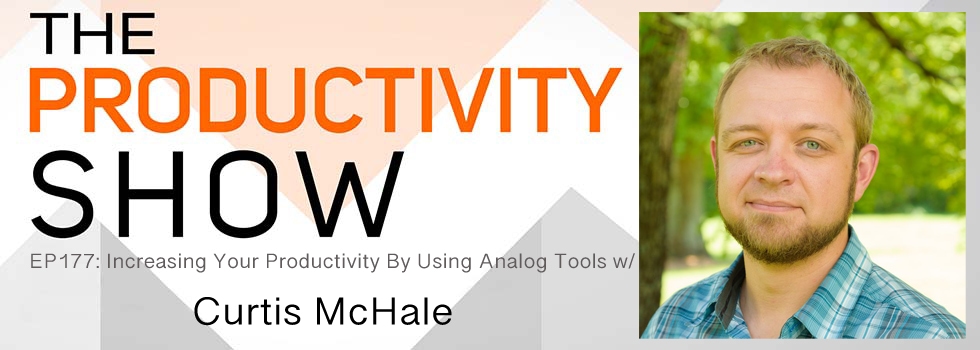
In this episode, we dive deep into the topic of analog productivity. Mike is joined by Curtis McHale, a Dojo member and business owner who has been running a successful web software consulting business for 6 years and helping others do the same for the last 2. Curtis is also the creator of the Analog Productivity video module which was just published on the Dojo where he does a great job explaining how sometimes the best way to speed up is to slow down by using analog tools. Mike and Curtis talk about how analog productivity can actually help you get more done by introducing constraints, share the benefits and drawbacks to analog productivity, and walk you through some popular analog systems. They discuss the essential components to any productivity system, and give you a sneak peek into Curtis’ own hybrid system that he uses to stay on top of all his professional responsibilities and still carve out time for outdoor activities and being a dad. If you are intrigued by the concept of speeding up by slowing down, this episode is for you.
Cheat Sheet
- How Curtis got started with analog productivity [2:12]
- The advantages of embracing an analog productivity system [2:59]
- A simple question you should ask before you use any tool, analog or digital [6:29]
- The drawbacks of analog productivity and why the benefits may outweigh the costs for you [9:07]
- How to resist “shiny new object syndrome” when using an analog system [14:25]
- An introduction to several popular analog productivity systems [17:48]
- What the KJ method is [20:20]
- The 5 parts of a good task management system [23:59]
- What anti-goals do and how to use them to move you forward [32:28]
- Curtis’s hybrid system that combines digital and analog [35:15]
- How he applies this system to personal projects [45:03]
Links
- The Pen is Mightier Than the Keyboard
- Leuchtturm1917 Weekly Planner & Notebook
- The Power of Anti-Goals
- Merlin Mann’s Hipster PDA
- BestSelf Journal
- $1 Dojo offer (includes access to Curtis’ Analog Productivity video course)
Connect with Curtis McHale
If you enjoyed this episode, subscribe to the podcast on iTunes, Stitcher, Overcast, PocketCast or your favorite podcast player. It’s easy, you’ll get new episodes automatically, and it also helps the show gain exposure. You can also leave a review! Here’s how.
If you enjoyed this episode, follow the podcast on Apple Podcasts, Spotify, Stitcher, Overcast, Pocket Casts or your favorite podcast player. It’s easy, you’ll get new episodes automatically, and it also helps the show. You can also leave a review!

I agree with Alex. I just listened to this today.
The podcast with Curtis McHale could have been a lot better but I found Curtis hard to listen to because he doesn’t always speak clearly. Sometimes he talks too fast and he mumbles a bit. Also, the sound on his side wasn’t that great. I like the analog topic though and I would like to hear more about using notebooks to move closer to your goals.